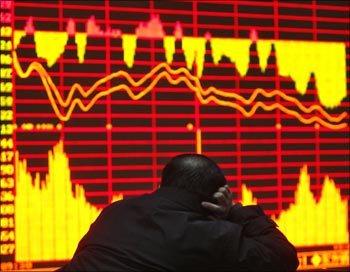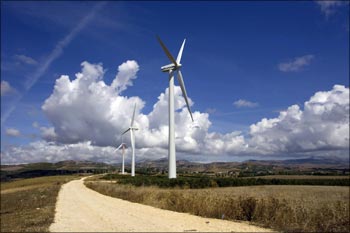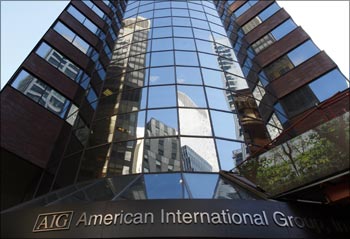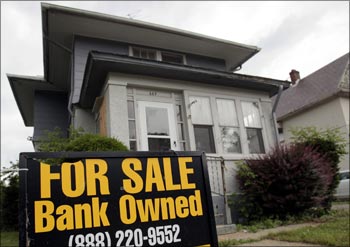Photographs: Adnan Abidi/Reuters Sunil Kewalramani
One year after the world's brush with economic catastrophe, there's a lot to learn from bubbles that caused the financial chaos. And what does this tell us of what's next on the radar?
Why do bubbles form and why do markets crash? Both are intriguing questions and both are the result of the inefficiency of human psychology. Put a million humans in a room with blinking lights, ever-changing prices and money on the line and you have a recipe for mass hysteria.
According to Charles Kindleberger, the US economic historian, the first stage of a bubble is an economic event that justifies some increase in asset prices. In the housing bubble, that is (now) easy enough to see in the use of securitisation. By apparently spreading risk, it lowered borrowing costs and thereby increased the pool of would-be housebuyers.
In the case of dot-coms, railways and canals, the event was exciting new technology. Even tulips were new to Europe when the Dutch suffered their mania. In this equity market rally, the event could be the growing relief from March onwards that complete financial Armageddon had in fact been avoided.
This would justify some re-rating of business expectations from the extreme lows seen in the wake of the collapse of Lehman Brothers.
Here are a few bubbles-in-the-making one should be on the watch for. . .
Beware! 10 future bubbles in the making
Image: A man looks at an electronic board at a securities exchange in Wuhan, Hubei province, China.Photographs: Stringer/Reuters
1. China bubble
Despite the weak global economy, the Chinese stock market has soared. According to a government senior economist, some 30 per cent of the newly extended loans went straight into the housing market, with 20 per cent going to the Chinese stock exchange. Last fall, Chinese stocks traded at 12.9 times earnings.
After just eight months, they rallied to trade at 38 times earnings. Of the 1,739 Chinese companies trading on the Shanghai, Shenzen and Hong Kong exchanges, the average price-to-book ratio is 5.02, compared to 2.1 for the S&P 500. In mid July, Chinese investors opened 484,799 stock brokerage accounts in a single week!
Jim Rogers literally wrote the book on investing in China -- A Bull In China: Investing Profitably In The World's Greatest Market. But he hasn't bought any Chinese stocks recently.
Over the past two months, we've witnessed multiple 4 per cent-plus drops for the Shanghai Index. And we already know what happens when the China euphoria truly wanes. In 2008, the Shanghai index plunged by two-thirds.
Beware! 10 future bubbles in the making
Image: Green technology: Wind generators on a farm in the countryside near the Sicilian town of Trapani.Photographs: Giuseppe Piazza/Reuters
2. The all-asset bubble
All asset classes -- stocks, bonds and commodities -- are rising simultaneously which is technically not feasible since they factor in different economic scenarios. Gold normally rises in times of uncertainty. Yet, the yellow metal is rising alongwith equities, which normally rise in an era of great certainty.
3. Green bubble
Observers believe the 'age of cleantech and biotech' will be the next major economic revolution. Washington is pouring billions of dollars into alternative energy projects, as a quasi-stimulus.
4. Federal Reserve bubble
At first glance, the Fed's effort to clean up mortgage-backed securities is a winner. But, by eagerly trying to save banks and stabilise the housing market, Washington is taking on too much: $ 1.25 trillion of mortgaged-backed securities, including both the original toxic assets and products of foreclosures to come.
Beware! 10 future bubbles in the making
Image: American International Group Inc corporate headquarters in New York.Photographs: Mike Segar/Reuters
5. Trash stock bubble
In India, real estate stocks have rallied tremendously even in the face of challenging economic conditions. Although the residential housing market has revived in metropolitan cities in India, the commercial real estate market continues to languish as reflected in falling mall rentals.
In the US, stocks like Fannie Mae, Freddie Mac, American International Group and even GM made big runs in August -- trading in trash financials made up nearly one-third of NYSE's August volume.
Some attribute it to high frequency traders and some to short squeeze. And others say it is retail speculation and day traders getting their way while Wall Street went on vacation.
6. Education bubble
In India, every industrialist worth his salt is trying to jump into the education bandwagon.
In the US, the amount borrowed by students and received by schools grew some 25 per cent over the previous year, to $75.1 billion. That's a huge amount, especially with weak, low-paying job prospects for graduates in a fragile American economy.
Beware! 10 future bubbles in the making
Image: A 'For Sale-Bank Owned' sign sits in front of a home in Pontiac, Michigan.Photographs: Rebecca Cook/Reuters
7. Subprime bubble 2.0
What are banks doing with all those subprime mortgages? They're repackaging them with a higher rating -- re-securitisation of real estate mortgage investment conduits -- and selling them.
8. Life insurance securitisation bubble
In its search for new avenues, Wall Street is planning on securitising life settlements -- policies that the sick and elderly can sell for cash while they're alive -- much like it did subprime mortgages.
9. Commercial real estate bubble
There are estimates that commercial property loans worth $83 billion have been involved in default, foreclosure or bankruptcy in 2009. Half a trillion dollars of commercial loans financed on historically low rates, are due for refinancing in the next three years.
Beware! 10 future bubbles in the making
Image: The Bombay Stock Exchange building in Mumbai.Photographs: Reuters
10. Emerging market bubble
Risk-tolerant investors have poured $10.6 billion into emerging market mutual funds this year -- a whopping 34 times more than the total amount invested in US funds.
The MSCI Barra index of emerging equity markets has beaten the Dow Jones Industrials by about 20 percentage points since before Lehman's collapse, and by almost 40 since early March. Trailing valuations are the highest in almost a decade. Bonds show a similar exuberance.
The excess yield over US Treasury notes in the benchmark EMBI+ Index is now about 320 basis points, less than just before Lehman's collapse.
Since the financial markets' nadir in early March, a Brazilian 10-year sovereign bond has seen its yield drop 208 basis points even as the US 10-year note's yield has risen 52bps.
A bubble first represents a short-term profit opportunity in the belief that he or she, almost alone, can ride the rally and pick the peak correctly.
Of course, if everyone is thinking thus, we might have already passed into the euphoric stage. And another bubble may have already assumed concrete shape!
The author is CEO, Global Money Investor.








article